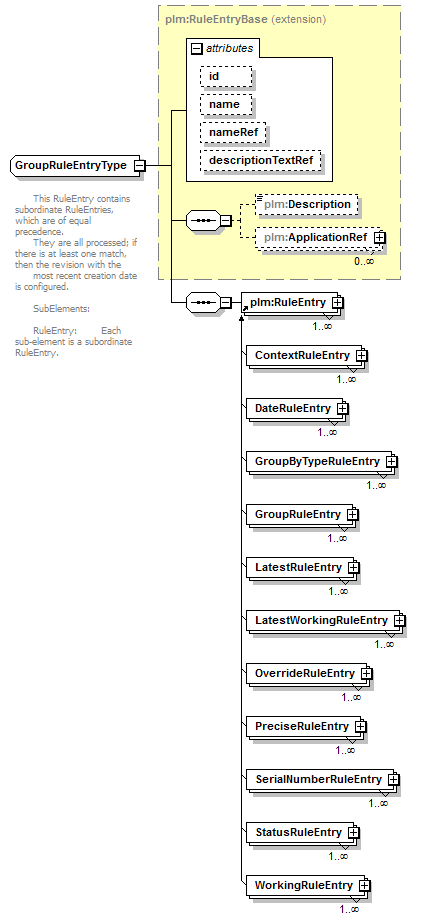| diagram |  |
||||||||||||||||||||||||||||||
| namespace | http://www.plmxml.org/Schemas/PLMXMLSchema | ||||||||||||||||||||||||||||||
| type | extension of plm:RuleEntryBase | ||||||||||||||||||||||||||||||
| properties |
|
||||||||||||||||||||||||||||||
| children | plm:Description plm:ApplicationRef plm:RuleEntry | ||||||||||||||||||||||||||||||
| used by |
|
||||||||||||||||||||||||||||||
| attributes |
|
||||||||||||||||||||||||||||||
| annotation |
|
||||||||||||||||||||||||||||||
| source | <xsd:complexType name="GroupRuleEntryType"> <xsd:annotation> <xsd:documentation> This RuleEntry contains subordinate RuleEntries, which are of equal precedence. They are all processed; if there is at least one match, then the revision with the most recent creation date is configured. SubElements: RuleEntry: Each sub-element is a subordinate RuleEntry. </xsd:documentation> </xsd:annotation> <xsd:complexContent> <xsd:extension base="plm:RuleEntryBase"> <xsd:sequence> <xsd:element ref="plm:RuleEntry" maxOccurs="unbounded"/> </xsd:sequence> </xsd:extension> </xsd:complexContent> </xsd:complexType> |
XML Schema documentation generated by XMLSpy Schema Editor http://www.altova.com/xmlspy